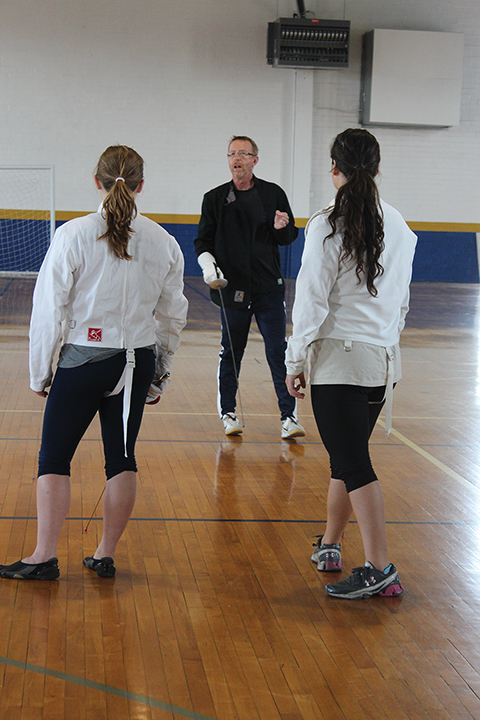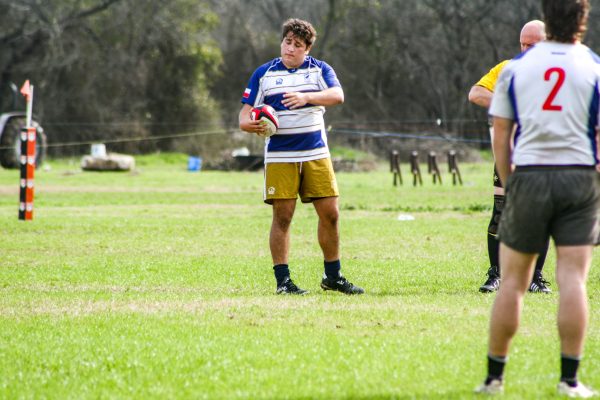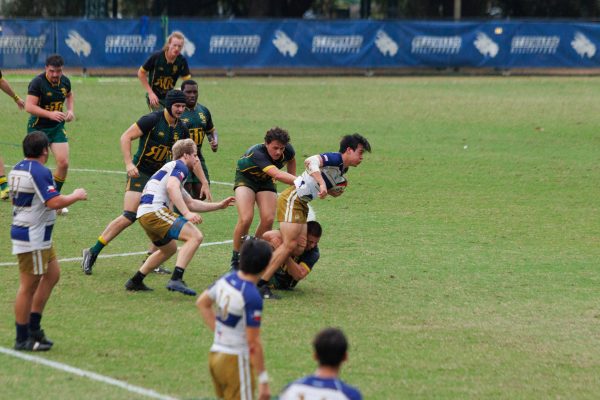Fencing club making comeback with new course
Two years ago, Andy Hirschfeld, junior, started a fencing club at St. Edward’s University. He intended for the club to eventually become a team. In those two years, the club met consistently, but members were not able to make every meeting. With a dwindling attendance, the club never got to the ranks of a full-fledged team.
Unlike the Texas State University, whose Fencing Club is the oldest acting sports club at TSU, St. Edward’s, does not have a fencing club this year. Fortunately, it does have the potential.
Shuffling, lunging, and clipping to complete an electric circuit with the tips of their swords, fencers display an elegant and strategic fight. There are three styles of fencing: foil, sabre and épée. Gary van der Wege teaches a fencing class at St. Edward’s that focuses on the foil style. Foil is the traditional entrance category that beginner fencers learn. van der Wege’s students carry thin, lightweight swords with red spring tips for this style.
Although it is an early morning class, the students are always are full of smiles. For them, the class provides a fun morning of learning and play and stands out against the rest of their schedule.
van der Wege has competed in both Athens and London as a member of the U.S. Paralympic team. He is passionate about the sport and teaching it to others
“Teaching fencing is really just sharing something I love,” van der Wege said. “I have been fortunate to receive a lot of coaching training from a variety of sources, including coaches from around the world. Over the years I have tried to blend all of that information with my own teaching style. It has to be fun for the fencer to want to do more.”
Dr. Drew Loewe, assistant professor of English Writing & Rhetoric, is also an avid fencer. The walls of his office hold numerous fencing posters, including one outlining the épée style in which Loewe has competed.
Of the three fencing styles, épée is the only one that allows players to score simultaneously. In épée, the entire body is a target. Unlike the foil sword, the épée sword is sturdier and longer.
For a short time, Loewe was the advisor of the fencing team. Like Hirschfeld, he loved the sport, had competed in matches and wanted to establish a St. Edward’s fencing team. His equipment, despite being a bit aged, remains on campus and passes code for competition.
This comment on the equipment’s durability is encouraging to potential St. Edward’s fencers, since the sport typically requires a hefty investment to begin. But the cost levels out over time and, for those who really love fencing, the investment certainly reaps rewards.












